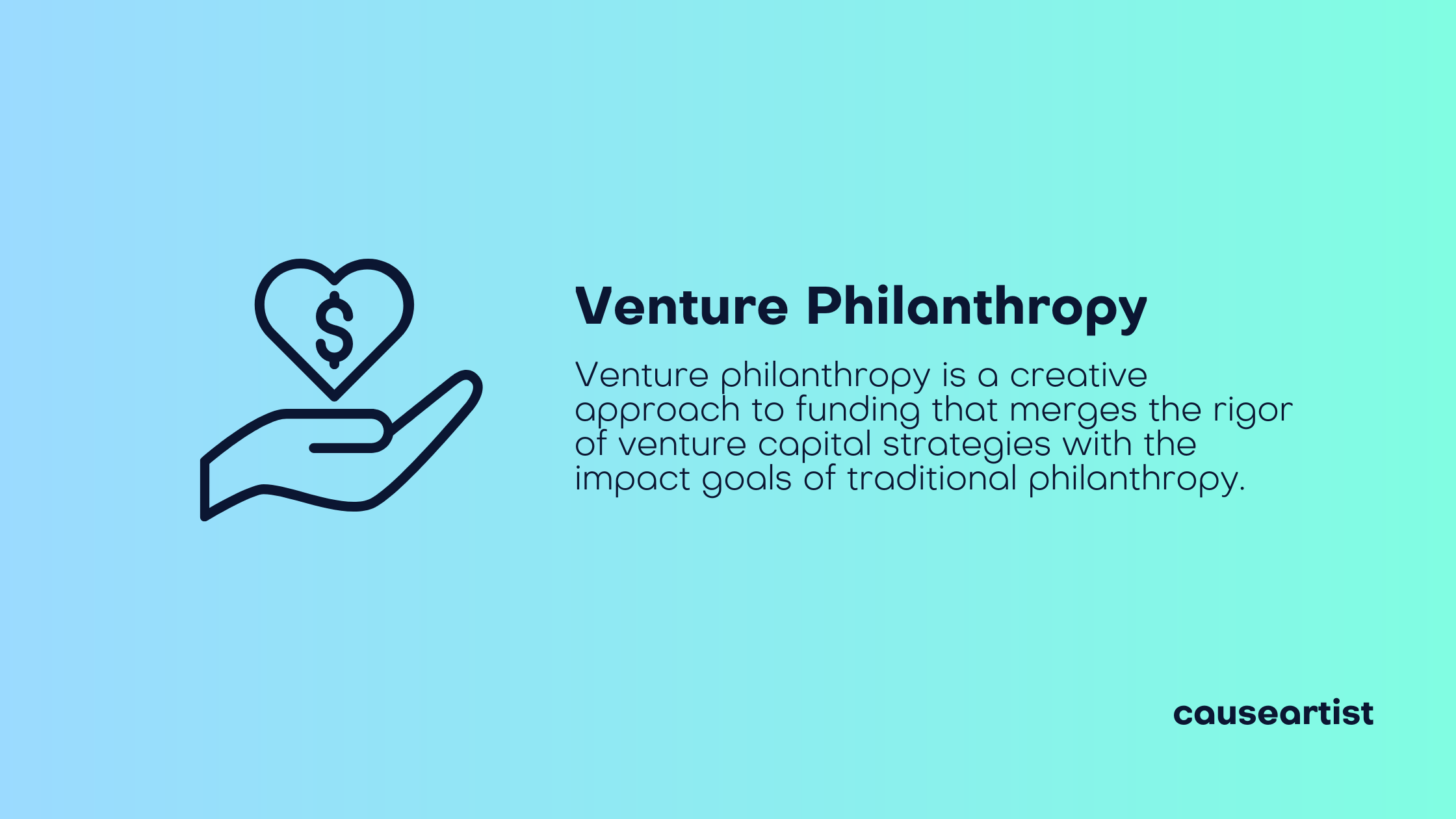Venture philanthropy is a creative approach to funding that merges the rigor of venture capital strategies with the impact goals of traditional philanthropy.
This innovative model emphasizes creating measurable and sustainable change, focusing on equipping social enterprises with the tools, resources, and expertise needed to thrive.
Unlike conventional giving, venture philanthropy prioritizes long-term relationships and measurable outcomes, ensuring that every dollar creates meaningful impact.
Key Features of Venture Philanthropy
Venture philanthropy stands out due to its unique characteristics:
- Long-Term Engagement: Support typically spans multiple years, fostering deep, meaningful partnerships.
- Tailored Funding: Financial support is complemented by non-financial resources, such as mentorship and networking opportunities.
- Capacity Building: Emphasis on improving operational and organizational capabilities for grantees.
- Measurable Outcomes: A strong focus on tracking progress and adjusting strategies based on results.

How Venture Philanthropy Differs from Traditional Philanthropy
While traditional philanthropy often involves donations with minimal oversight or engagement, venture philanthropy adopts a more hands-on approach.
Here’s how they differ:
| Aspect | Traditional Philanthropy | Venture Philanthropy |
|---|---|---|
| Focus | Charitable giving | Social enterprise development |
| Engagement | Passive | Active, with ongoing involvement |
| Metrics | Limited measurement | Rigorous impact tracking |
| Funding Type | Grants or donations | Grants, loans, or equity funding |
The Core Principles of Venture Philanthropy
- Accountability: Grantees are held accountable for achieving defined goals.
- Adaptability: Funding strategies evolve based on the organization’s needs and market conditions.
- Collaborative Approach: Philanthropists and grantees work closely, fostering a spirit of partnership.
Impact Investing and Venture Philanthropy
Although closely related, impact investing and venture philanthropy serve different purposes. Impact investing seeks financial returns alongside social impact, while venture philanthropy focuses solely on maximizing societal benefits.
Both approaches, however, share common values, such as innovation and accountability.
Venture Philanthropy Process
The process typically unfolds as follows:
- Identifying High-Potential Organizations: Focus on entities with scalable and sustainable solutions.
- Due Diligence: Conduct comprehensive assessments of the organization’s leadership, mission, and finances.
- Funding and Support: Provide a mix of financial aid and strategic guidance.
- Monitoring and Evaluation: Regularly track progress and adjust strategies as needed.
- Exit Strategy: Gradually reduce involvement, leaving the organization in a position of strength.
Sectors Benefiting from Venture Philanthropy
From education to healthcare, numerous sectors benefit from this innovative funding model. Examples include:
- Education: Supporting startups that develop digital learning tools.
- Healthcare: Funding initiatives aimed at improving access to medical care in underserved regions.
- Environment: Promoting renewable energy and sustainable practices.
Notable Examples of Venture Philanthropy
Organizations like the Skoll Foundation, New Profit, and Acumen Fund exemplify the impact of venture philanthropy.
For instance, the Skoll Foundation has funded numerous projects aimed at addressing global poverty, achieving remarkable results in terms of scale and sustainability.
Benefits of Venture Philanthropy
For philanthropists, this model ensures that contributions create tangible change. For grantees, the support goes beyond funding, empowering them to reach new heights.
Challenges in Venture Philanthropy
Despite its potential, venture philanthropy is not without challenges, such as:
- High Initial Costs: Rigorous due diligence can be expensive.
- Cultural Misalignment: Differences in expectations between funders and grantees.
- Measuring Impact: Quantifying social impact remains complex.
Future Trends in Venture Philanthropy
Emerging trends include the integration of AI for impact assessment and increased focus on climate solutions. These innovations promise to make venture philanthropy even more effective and scalable.








